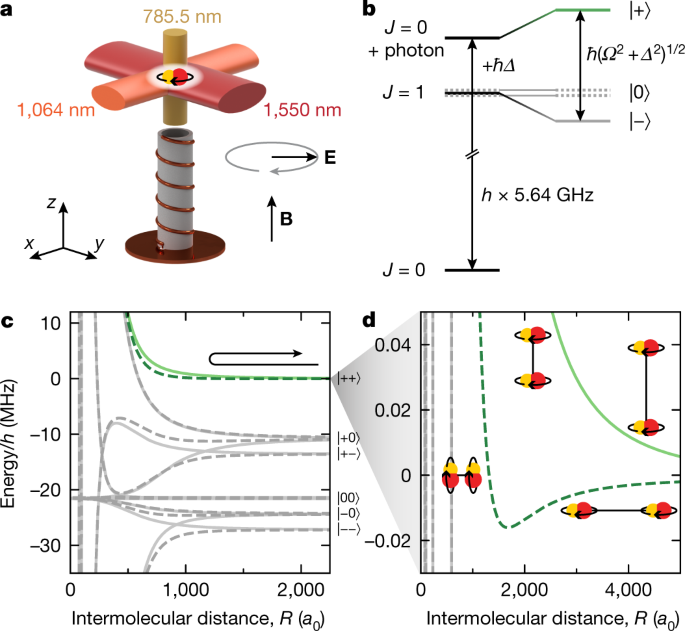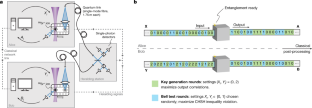極性分子の気体を絶対零度近くまで冷却する新しい方法が、エキゾチックな物質の量子効果を研究する道を開く A new method to cool gases of polar molecules to near absolute zero paves the way for studying quantum effects of exotic forms of matter
2022-07-28 マックス・プランク研究所
研究チームがこの難題を克服するために用いた手法は、回転するマイクロ波磁場に基づいている。回転するマイクロ波磁場は、冷却中の分子間の衝突をエネルギー的に安定させるのに役立つ。
研究者たちは、ナトリウム-カリウム分子の気体を、絶対零度より210億分の1度高い温度まで冷却することに成功した。これにより、低温の新記録を樹立した。今後、この新しい技術によって、これまで実験的に到達できなかったさまざまな形態の量子物質の生成と探索が可能になると期待される。
<関連情報>
- https://www.mpg.de/19035150/0728-qopt-a-nanokelvin-microwave-freezer-for-molecules-153540-x1
- https://www.nature.com/articles/s41586-022-04900-0
マイクロ波で遮蔽された極性分子の蒸発から量子縮退まで Evaporation of microwave-shielded polar molecules to quantum degeneracy
Andreas Schindewolf,Roman Bause,Xing-Yan Chen,Marcel Duda,Tijs Karman,Immanuel Bloch & Xin-Yu Luo
Nature Published27 July 2022
DOI:https://doi.org/10.1038/s41586-022-04900-0

Abstract
Ultracold polar molecules offer strong electric dipole moments and rich internal structure, which makes them ideal building blocks to explore exotic quantum matter1,2,3,4,5,6,7,8,9, implement quantum information schemes10,11,12 and test the fundamental symmetries of nature13. Realizing their full potential requires cooling interacting molecular gases deeply into the quantum-degenerate regime. However, the intrinsically unstable collisions between molecules at short range have so far prevented direct cooling through elastic collisions to quantum degeneracy in three dimensions. Here we demonstrate evaporative cooling of a three-dimensional gas of fermionic sodium–potassium molecules to well below the Fermi temperature using microwave shielding. The molecules are protected from reaching short range with a repulsive barrier engineered by coupling rotational states with a blue-detuned circularly polarized microwave. The microwave dressing induces strong tunable dipolar interactions between the molecules, leading to high elastic collision rates that can exceed the inelastic ones by at least a factor of 460. This large elastic-to-inelastic collision ratio allows us to cool the molecular gas to 21 nanokelvin, corresponding to 0.36 times the Fermi temperature. Such cold and dense samples of polar molecules open the path to the exploration of many-body phenomena with strong dipolar interactions.



